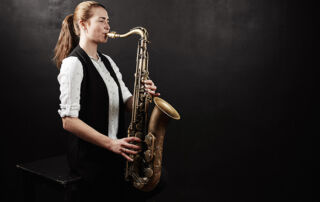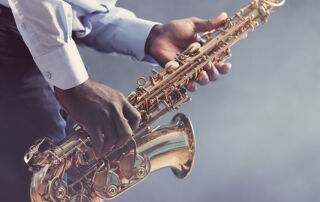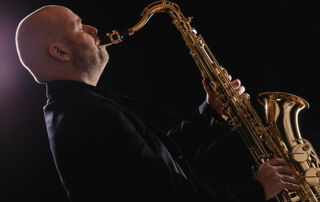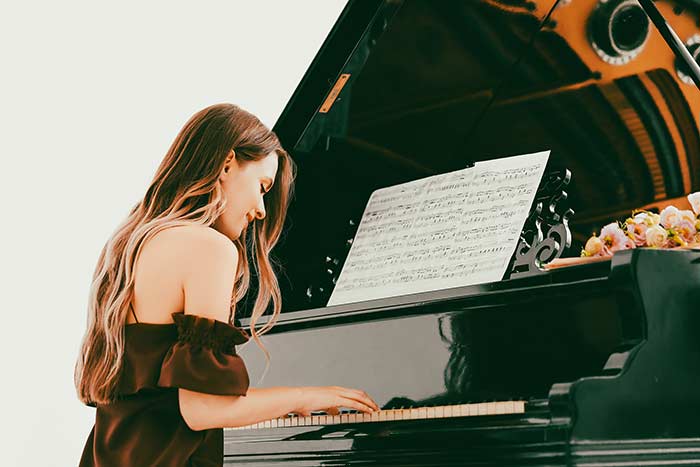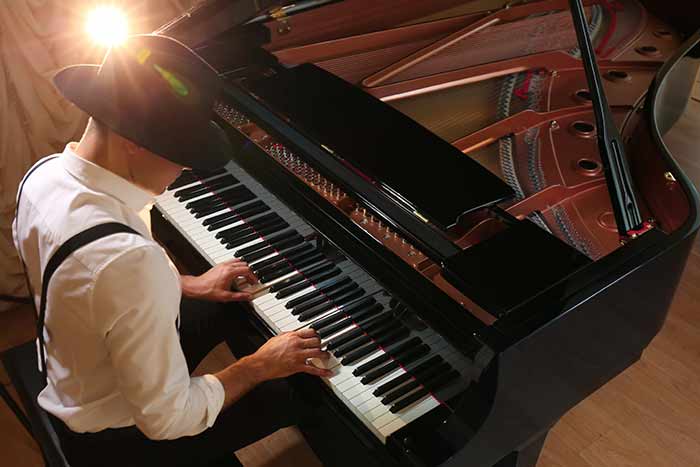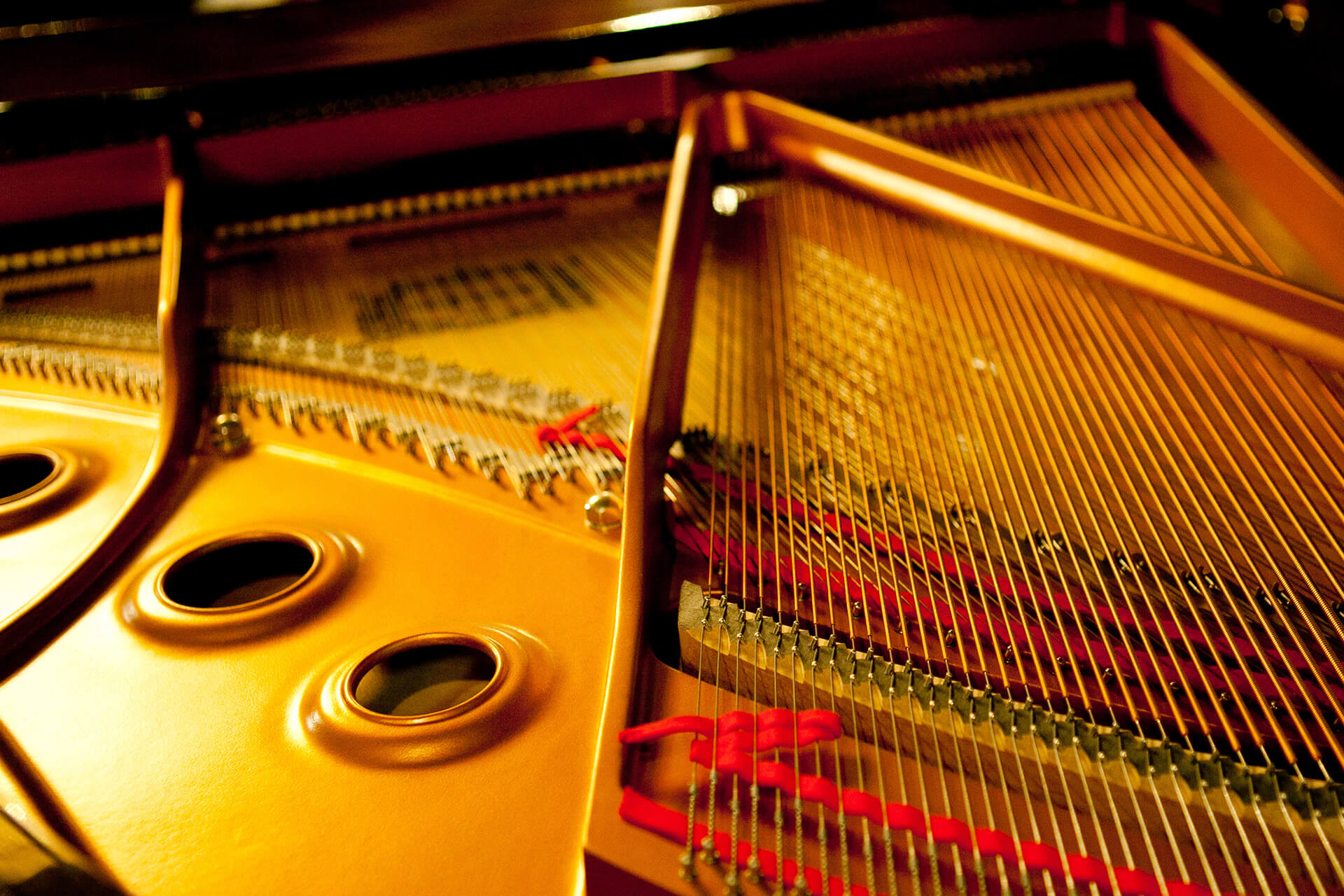The word "chant" is derived from the Latin "cantus," meaning the singing of a human, a bird, the sound of an instrument, or a poem.
A multitude of forms and genres have developed in the West around simple singing (hymn, ode, lay...) which gradually led to true artistic singing.
Throughout its history, singing has taken on numerous forms: the aria, the cantata, the oratorio, the mass, the opera, the duet...
During the Middle Ages, two types of music coexisted: religious music, primarily composed of Gregorian chant, and secular music.
During the Renaissance, the genres included polyphonic songs, motets, madrigals, and masses.
During the Baroque era, certain genres such as oratorio, opera, and cantata emerged, while others like polyphonic madrigals disappeared.
During the Romantic era, the "lied" was born. This type of singing is derived from romantic poems. It was also the heyday of Italian opera.
In traditional music, songs reflect the cultural diversity of people around the world.
In jazz, the voice can be used as an instrument to sing lyrics in the manner of instrumental solos or to use onomatopoeia instead of words (scat singing).
Choral singing offers opportunities for a larger number of people and helps maintain social connections.
Choir rehearsals often take place once a week. The work is very rewarding because the choir director teaches you to build a program as a group in order to perform it in concerts for the audience.

The different types of voices
Voices are classified into several categories:
Female voices:
Soprano (the highest-pitched voice), which is divided into three subcategories: light soprano (sometimes called coloratura soprano), lyric soprano, and dramatic soprano.
Mezzo-soprano which is also divided into different subcategories: light mezzo-soprano, lyric mezzo-soprano, and dramatic mezzo-soprano.
Contralto (the lowest-pitched female voice).
Male voices:
Tenor (the highest-pitched male voice) is divided into three subcategories:
Light tenor, lyric tenor, and dramatic tenor.
Baritone which includes many subcategories:
Barytone-Martin baritone (light baritone)
Lyric baritone
Dramatic baritone
Verdi baritone
Bass baritone
Bass (the lowest-pitched voice)
There are unclassifiable voice types such as the countertenor (a rare male voice) which was particularly popular during the Baroque period, especially in sacred music.
A very rare voice type nowadays is the haute-contre.
It is a tenor with a very wide vocal range. By using his head voice (a technique that utilises the highest register), he can reach high notes. This type of voice was found in tragic operas.
In a mixed choir, the four sections (for women, soprano and alto, and for men, tenor and bass) perform the part of the piece that is intended for their respective voices on the score.

The technique of singing
What happens in my body when I sing?
Air is expelled from the lungs through the action of the diaphragm and causes the vocal cords to vibrate. The sound produced is amplified by natural cavities (nose, sinuses, pharyngeal cavities, chest) and then articulated by the tongue and lips to form syllables.
The benefits of singing
Singing activates areas of the brain associated with pleasure.
Singing allows for the release of daily tensions and the expression of our deepest emotions.
Diaphragmatic breathing activates the vagus nerve, a long nerve that connects dozens of parts of the body to the brain.
Singing in a group stimulates our sociability by increasing our oxytocin levels.
Through singing, all the emotions of life can be expressed.
Singing improves concentration and memory.
Singing stimulates the brains of premature babies.
Singing reduces pain.
Prenatal singing is excellent for establishing an emotional connection with the baby.
Who cannot sing?
People with amusia or neurological or genetic abnormalities that prevent the perception of rhythm, melody, and chords.
This condition affects only 4% of the global population, so there is very little chance that you cannot sing.
When to start?
The average age to start learning to sing is between 7 and 14 years old. Most choirs welcome children starting from the age of 8.
But, of course, you can start as an adult just like any other instrument.
The voice is a fragile and delicate instrument, and I highly recommend taking lessons to avoid damaging your vocal cords.
Keep in mind that everyone has their own unique voice. You will never achieve the same voice as your idol through imitation.
As I advise beginners in singing, do not attempt to sing a piece at full tempo right away. Do not sing for several hours a day, and be sure to warm up your voice before starting your practice session.

My little tips for getting it right:
Even if your goal is not to become a famous singer, it is important to follow some advice in order to fully enjoy and thrive in this discipline.
Sing in a relaxed manner, and your voice will sound pleasant.
Master your breath by using abdominal breathing.
Choose a teacher with whom you have a good rapport. They can teach you the basics of singing, such as the ideal posture, vocal exercises, and provide you with many techniques that will help you improve your voice.
You should learn the basics of music theory, which will enable you to read musical notes, understand rhythm, and learn to sing in tune by sharpening your ear.
Singing requires much less practice time than learning to play an instrument to achieve good results.
The teacher will help you identify your vocal range (the range between the lowest and highest notes you can sing).
The positive aspect of singing is that you can practice it anywhere and at any time, as long as you maintain proper posture and relaxation.
Anyone can learn to sing, and I encourage you to start as soon as possible.

Have you always wanted to sing?
If you've always wanted to learn how to sing and you live in Paris, we have excellent singing teachers who can help you develop your voice and achieve your musical goals.
For more information about our singing lessons, please visit:
If you want to learn how to sing but live abroad, we also offer high-quality online singing lessons through the Online Singing Institute.
For more information about our online singing lessons, please visit:

